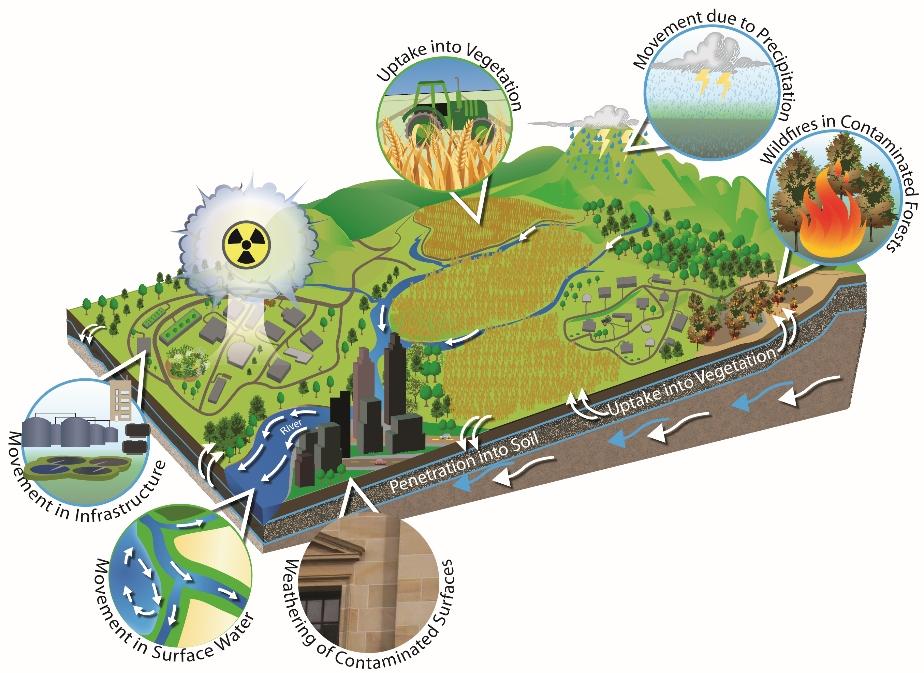Transport Studies
Contaminants in the environment move in response to wind, rain and human activities such as tracking by foot or vehicle. Contaminants can percolate into the soil and enter groundwater, runoff into streams or be transported through the air. EPA must be able to predict the movement of contamination in  Movement of cesium in the environment.the environment for several reasons. Knowledge of where contamination might migrate will guide decisions on where to sample in order to characterize the extent of contamination. Predicting where contamination will go determines who could be exposed so that precautions to minimize exposure can be taken. Knowing how contaminants might move in the environment enables EPA to take countermeasures to minimize the spread of contamination.
Movement of cesium in the environment.the environment for several reasons. Knowledge of where contamination might migrate will guide decisions on where to sample in order to characterize the extent of contamination. Predicting where contamination will go determines who could be exposed so that precautions to minimize exposure can be taken. Knowing how contaminants might move in the environment enables EPA to take countermeasures to minimize the spread of contamination.
EPA conducts transport studies at the laboratory level, through computer modeling and during field-scale exercises to better understand and minimize the spread of contamination in the environment.
